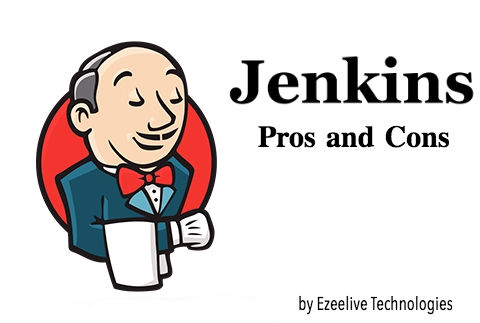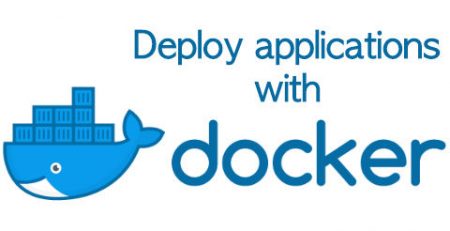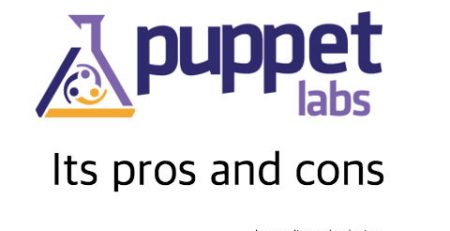Jenkins Pros and Cons: Is It the Right CI/CD Tool in 2025? – Strengths, Weaknesses, and Alternatives
- What is Jenkins?
- Jenkins Plugins
- Jenkins Pros
- Jenkins Cons
- Some Important Links
- What are Jenkins pipelines and why are they important?
- What are the key benefits of using Jenkins for CI/CD?
- What is the difference between freestyle project and pipeline in Jenkins?
- How to implement parallel builds in Jenkins pipelines?
- Why is my Jenkins build failing? Common errors and solutions
- Is Jenkins still relevant in 2025?
- Jenkins declarative vs scripted pipeline: Which should you use?
- Jenkins vs Jenkins X: What’s the Difference?
- Conclusion
What is Jenkins?
Jenkins is an automation server software that is used frequently to achieve continuous integration and delivery in software projects.
It is one of the most popular continuous integration tools available in the market today. Jenkins is open source and is available free of cost.

Traditionally, developers used to push their code (the process of code commit) to a version control server. Once there was enough code to build into a release, someone would invoke a build tool that took all the pushed code and created a build out of it, that could be released into a specific environment (Dev, QA, UAT/ Stag or Production).
With continuous integration, this ‘build’ operation is invoked each time a developer pushes his or her code to the repository. Jenkins, in this case, would also run tests to make sure that the build is stable and okay for delivery. If there are problems with the build, Jenkins would notify the developers that there is a problem.
Jenkins supports Windows, Linux, Mac OS X, and Unix operating system. It is supported by an active community that regularly contributes to the features and documentation of the tool.
Developers invoke Jenkins in various ways. Some write a program that executes periodically (a cronjob) that allows Jenkins to pick the latest code from the repository and build it. It can also be conditioned to act as soon as there is a new commit in the repository.
Jenkins Plugins
Jenkins comes with a wide range of plugins as well that extend its functionality. The plugins from Jenkins range from ones that give control over the jobs they run to getting statistics on the builds done.
Some of the popular plugins include Post + Build + Task that lets you perform specific actions depending upon the results of a build.
If a build passes you can upload a success file and if it fails, you can roll back your release. Jenkins also has plugins that help you integrate with different version control systems. This comes very handily when you are working on huge projects that have code bases scattered across different servers.
Jenkins also offers plugins that let you do a specific task before doing a build. As mentioned before, Jenkins also has a plugin (called the JobGenerator Plugin) that lets you manage jobs using templates and role-based access.
Here are TOP 50 Jenkins plugins in 2025:
- Git
- Subversion
- Jira
- Ansible
- Kubernetes
- SonarQube
- Docker
- Maven Integration
- Amazon EC2
- Build Pipeline
- Blue Ocean
- Mailer
- Pipeline
- Metrics
- Slack-Jenkins
- JaCoCo
- Copy Artifact
- Folders
- Performance
- Multijob
- Disk-usage
- Green balls
- Incredibuild
- Audit Trail
- Android Lint
- Google Play Android Publisher
- Android Device connector
- Xcode
- iOS Device Connector
- ThinBackup
- JDK Parameter
- LDAP
- SSH Credentials
- Durable Task
- OWASP Markup Formatter
- ECharts
- MapDB
- Locale
- SAML
- Terraform
- Checkmarx
- Synk Security
- LogsStash
- Splunk
- Datadog
- MySQL DB
- Unity3D
- JFrong
- Packer
- HashiCorp Vault
Jenkins Pros

Jenkins is an immensely popular tool that is used in numerous projects needing continuous integration and delivery. Here are a few reasons of Jenkins advantages.
1. Jenkins is open source and free
The main Jenkins Pros is free to download, and the source code is also available. This has spawned a growing community of developers who are actively helping each other and contributing to the Jenkins project. This ensures that you get better and more stable versions each year.
2. Jenkins comes with a wide range of plugins
The second most important Jenkin Pros is it has a wide range of plugins that give a developer a lot of added features and power over the already feature-rich Jenkins installation. These plugins help developers extend Jenkins into their own custom tool for their projects.
3. Jenkins integrates and works with all major tools
Jenkins being the popular tool it is, integrates with all major version control tools like CVS, Subversion, Git, build tools like Apache Ant and Maven and even other tools like Kubernetes and Docker.
4. Jenkins is flexible
With its wide range of plugins and open architecture, Jenkins is very flexible. Teams can use Jenkins in projects of various sizes and complexity.
Jenkins places no limits on the kinds and numbers of servers that can be integrated with it. Teams across the globe can work towards continuous delivery, seamlessly.
5. Jenkins comes with a decent API suite
Jenkins comes equipped with APIs that lets you tailor the amount of data that you fetch. This mechanism helps your server use simple web-hooks to invoke Jenkins for specific purposes.
6. Jenkins is easy to use
An active, vibrant community, regularly updated documentation and support for all major operating systems mean that a person with just decent skills can download and get Jenkins up and run in a few hours.
The active community also readily answers questions on forums and groups that encourage newcomers into taking up this technology, more readily.
7. You have a ready talent base
We all know how difficult it is to find talent for very niche technologies. Jenkins has cemented itself to be a popular tool in software development and it is absolutely possible for a recruiter to find a decent developer who is also good with Jenkins.
Jenkins Cons

The advantages of Jenkins have contributed to its growing popularity and fan-base. There are also certain cons of using Jenkins that one must be aware of.
1. Unpredictable costs
The costs of hosting the server (which isn’t free) that Jenkins runs on cannot be predicted easily. It is not always possible to predict the kind of load (depending on the number of commits, volume of code, volume of assets etc.) that the server is going to serve. Hence the cost factor, even if Jenkins itself is free, remains unpredictable.
2. Lack of governance
Jenkins’ management is generally done by a single user and that leads to tracking and accountability problems with the pushed code.
There is tracking that exists on the Version Control Server but there is no tracking of that kind of Jenkins itself, which is a concern.
3. No collaboration features
Jenkins doesn’t allow one developer to see the commits done by another team member, readily. This makes tracking the overall release progress a rather difficult job for larger projects. This can cause a lot of trouble to the release manager.
4. Lack of analytics
Jenkins doesn’t provide any analytics (there are plugins, but they are not enough) on the end-to-end deployment cycle. This again goes back to the lack of overall tracking that contributes to the lack of analytics as well.
5. Needs personnel
While Jenkins is indeed a powerful and useful tool, managing a Jenkins server needs special attention and many times, a dedicated developer. This adds man hours to the project and pushes up the overall project cost as well.
Some Important Links
| Topics | Link URL |
|---|---|
| Jenkins Community Blog | https://jenkins.io/node/ |
| Plugins | https://plugins.jenkins.io/ |
| Participate and contribute | https://jenkins.io/participate/ |
| Download | https://jenkins.io/download/ |
| Google Summer of Code | https://jenkins.io//projects/gsoc/ |
| Infrastructure | https://jenkins.io//projects/infrastructure/ |
Jenkins is extremely powerful, extendable, and flexible and also remains one of the most popular continuous integration and delivery software in the world.
With its new versions, one can hope that it eliminates some of the cons and grows, even more, to become every developer’s and IT company’s favourite continuous integration tool.
What are Jenkins pipelines and why are they important?
Jenkins pipelines are a suite of plugin features that support automating the process of building, testing, and deploying code within Jenkins. A pipeline defines your entire CI/CD workflow as code, using a Jenkinsfile.
There are two types of pipelines in Jenkins:
Declarative Pipeline: Simple, structured syntax ideal for most use cases
Scripted Pipeline: Uses full Groovy syntax; gives more flexibility for complex logic
Why Are Jenkins Pipelines Important?
- Pipelines automate every stage of the software delivery lifecycle, reducing manual errors and speeding up deployment.
- Defining the pipeline in a version-controlled Jenkinsfile brings transparency, repeatability, and easier debugging.
- Developers, testers, and DevOps teams can work with a shared, readable pipeline configuration.
- Supports parallel builds, conditional logic, parameterized inputs, and complex branching workflows.
- Automatically running tests and builds on every commit helps catch bugs early in the development cycle.
- Easily integrates with Git, Docker, Kubernetes, Slack, SonarQube, and other tools to streamline end-to-end workflows.
pipeline {
agent any
stages {
stage('Build') {
steps {
echo 'Building...'
}
}
stage('Test') {
steps {
echo 'Testing...'
}
}
stage('Deploy') {
steps {
echo 'Deploying...'
}
}
}
} 
What are the key benefits of using Jenkins for CI/CD?
- Open Source & Free: Jenkins is free to use, actively maintained, and supported by a large global community.
- Highly Extensible: With over 1,800+ plugins, Jenkins integrates with almost every DevOps tool – Git, Docker, Maven, Slack, AWS, Kubernetes, and more.
- Pipeline as Code: Automate build, test, and deployment processes using Jenkinsfile — enabling version control, easy rollback, and better collaboration.
- Cross-Platform Support: Runs on Windows, macOS, and Linux. You can use it on-premise, on VMs, or in cloud environments.
- Automated Workflows: Jenkins triggers jobs automatically on code pushes, pull requests, or schedule, enabling faster feedback and reducing manual intervention.
- Scalability: Supports distributed builds with master-agent architecture, helping teams scale CI/CD across large projects and teams.
- Customizable & Scriptable: Whether it’s a simple task or complex DevOps pipeline, Jenkins can be tailored using Groovy scripting or plugin configurations.
- Rich Ecosystem: Jenkins integrates with modern DevOps tools and supports parallelism, testing frameworks, static analysis, and more.
What is the difference between freestyle project and pipeline in Jenkins?
| Feature | Freestyle Project | Pipeline |
|---|---|---|
| Definition | GUI-based job configuration | Scripted as code using a Jenkinsfile |
| Flexibility | Limited to basic steps | Highly flexible, supports complex workflows |
| Version Control | Not version-controlled | Stored in source code repositories |
| Scalability | Less scalable for large projects | Ideal for large, modular pipelines |
| Code Reusability | Low | High (via shared libraries) |
| Parallel Execution | Not supported | Fully supported |
| Pipeline as Code | No | Yes |
Recommendation: Use Freestyle Projects for simple tasks and quick experiments. For modern, scalable, and collaborative CI/CD workflows, use Pipelines.
How to implement parallel builds in Jenkins pipelines?
Jenkins Pipelines – Implement Parallel Builds – Ezeelive TechnologiesIn Jenkins, parallel builds help speed up your CI/CD process by running multiple steps or jobs at the same time – ideal for tasks like testing across environments, compiling modules independently, or deploying to multiple servers.
Jenkins Parallel Build Syntax (Declarative Pipeline):
pipeline {
agent any
stages {
stage('Parallel Tasks') {
parallel {
stage('Unit Tests') {
steps {
echo 'Running unit tests...'
}
}
stage('Linting') {
steps {
echo 'Running lint checks...'
}
}
stage('Build Docs') {
steps {
echo 'Building documentation...'
}
}
}
}
}
}
Why is my Jenkins build failing? Common errors and solutions
| Error Type | Common Symptoms | Root Cause | Solutions |
|---|---|---|---|
| SCM Checkout Failure (Git/Repo) |
|
Invalid Git credentials, wrong URL, or SSH key issues |
|
| Missing Dependencies/Tools |
|
Build tools not installed on the Jenkins agent |
|
| Build Script Errors |
|
Broken pom.xml, build.gradle, or other config files |
|
| Permission Issues |
|
File or directory lacks execution/read rights |
|
| Jenkinsfile Syntax Issues |
|
Incorrect syntax in Jenkinsfile (Declarative or Scripted) |
|
| Plugin Compatibility Errors |
|
Outdated or incompatible plugins |
|
| Node/Agent Offline |
|
Disconnected agent or limited executor capacity |
|
| Environment Variable Issues |
|
Improperly set environment block or naming conflicts |
|
| Disk Space or Resource Limits |
|
Disk full or agent system overloaded |
|
| Timeouts or Network Failures |
|
Network downtime, firewall issues, or DNS failures |
|
| Artifacts/Dependencies Not Found |
|
Invalid repo URL, or missing published artifacts |
|
Is Jenkins still relevant in 2025?

As of 2025, Jenkins continues to be a powerful and flexible solution for implementing Continuous Integration and Continuous Delivery (CI/CD) pipelines. Its extensive plugin architecture, active community, and ability to integrate with virtually any tool make it a reliable choice for teams seeking control over their software delivery processes.
While newer CI/CD platforms offer cloud-native features and simplified workflows, Jenkins remains highly relevant especially for enterprises with complex, hybrid, or on-premise infrastructures. With continuous updates and support from the community, Jenkins is still evolving to meet the needs of modern software development.
Why Jenkins is still relevant?
- Massive Ecosystem & Flexibility: Jenkins remains one of the most flexible CI/CD tools with a huge plugin ecosystem. If you have unique or legacy needs, Jenkins can likely handle them.
- Mature & Stable: It’s a battle-tested solution, especially for enterprises with complex build pipelines and on-prem infrastructure.
- Custom Workflows: Jenkins excels at handling highly customized or hybrid deployment scenarios.
- Active Community: It’s still maintained and receives updates, even if it’s not the coolest kid in the DevOps playground anymore.
Where Jenkins might fall behind?
- Steeper Learning Curve: Compared to modern alternatives like GitHub Actions, GitLab CI, or CircleCI, Jenkins can feel bulky and harder to set up.
- Plugin Maintenance Issues: Some Jenkins plugins are outdated or poorly maintained, leading to fragility in pipelines.
- UI/UX: Still clunky compared to newer, more polished solutions.
Jenkins declarative vs scripted pipeline: Which should you use?
| Feature | Declarative Pipeline | Scripted Pipeline |
|---|---|---|
| Syntax | Simple, opinionated (pipeline { ... }) |
Flexible Groovy scripting |
| Ease of Use | Beginner-friendly | Steeper learning curve |
| Error Handling | Built-in features like post, when |
Manual scripting needed |
| Flexibility | Limited but structured | Highly flexible |
| Structure | Enforces best practices | No structure enforced |
| Parallel Execution | Built-in via parallel |
Manual code required |
| Tooling & UI Support | Better in Blue Ocean | Less emphasized |
| Best Use Case | Standardized CI/CD workflows | Advanced or dynamic pipelines |
Use Declarative: if you want simplicity, structure, and better visualization.
Use Scripted: if you need complex logic, dynamic behavior, or full control.
Jenkins vs Jenkins X: What’s the Difference?
| Feature | Jenkins | Jenkins X |
|---|---|---|
| Type | Traditional CI/CD server | Cloud-native CI/CD for Kubernetes |
| Architecture | Monolithic, plugin-based | Microservices, GitOps, Kubernetes-native |
| Setup & Deployment | Manual setup on VMs or containers | Automated installation on Kubernetes |
| Pipeline Style | Scripted/Declarative (Jenkinsfile) | Declarative, preview environments, GitOps |
| Kubernetes Support | Optional via plugins | Built-in and native |
| GitOps Integration | Not native (manual setup) | Core concept |
| Scalability | Manual scaling with agents | Auto-scalable with Kubernetes |
| Use Case Fit | General CI/CD use cases | Modern microservices & containers |
| User Interface | Classic Jenkins UI / Blue Ocean | Minimal UI, Git-centric workflows |
| Plugin Ecosystem | Large, mature ecosystem | Lightweight, curated plugins |
| Learning Curve | Easier for traditional CI/CD | Steeper, Kubernetes-focused |
Use Jenkins if:
- Working with traditional VMs or bare metal
- Existing Jenkins pipelines you want to maintain
- Team prefers a familiar UI and rich plugin ecosystem
- Not fully on Kubernetes
Use Jenkins X if:
- Building and deploying cloud-native apps on Kubernetes
- GitOps-style automation
- Automated preview environments and modern CI/CD workflows
- Using containers and microservices extensively
What is Blue Ocean in Jenkins and how to use it?
Blue Ocean is a modern, user-friendly interface for Jenkins plugin that reimagines the classic Jenkins UI, making it cleaner, more visual, and focused on pipeline-first workflows.
Key Features of Blue Ocean
| Feature | Description |
|---|---|
| Visual Pipeline Editor | Create/edit pipelines with drag-and-drop interface |
| Intuitive Visualization | Graphical view of each stage/step in the pipeline |
| Built-in Git Integration | Works with GitHub, Bitbucket, and others |
| Simplified Branch Handling | Easy visibility and management of branches |
| Better UX | Modern, responsive interface |
How to Use Blue Ocean

Step 1: Install the Plugin
- Go to
Manage Jenkins → Manage Plugins - Search for
Blue Oceanunder the Available tab - Install and restart Jenkins
Step 2: Access Blue Ocean UI
Visit http://<your-jenkins-host>/blue or click “Open Blue Ocean” on the main Jenkins dashboard.
Step 3: Create a Pipeline
- From Git Repository: Authenticate with GitHub/Bitbucket and select your repo
- Visual Pipeline Editor: Create a
Jenkinsfileusing GUI and commit it
Step 4: Run & Visualize
Click on the pipeline, run it, and view each stage and step. Click any step for logs or debugging info.
When Should You Use Blue Ocean?
- New to Jenkins and prefer visual tools
- Building pipelines frequently
- Managing microservices or multi-branch workflows
- Need easier pipeline debugging
NOTE: As of 2025, Blue Ocean is still usable, but active development has slowed down. Jenkins users looking for modern alternatives may consider other tools or GitOps-based UIs.
Conclusion
Jenkins pros include its open-source flexibility, extensive plugin ecosystem, and strong community support, making it a reliable tool for automating CI/CD pipelines. With easy integration into various development environments and scalable configurations, Jenkins pros help teams accelerate delivery, improve code quality, and support efficient DevOps practices.





Comment (1)
There is NOTHING about Jenkins that is easy to use. It’s nearly impossible to do anything with unless you have extensive resources available.
I also would not call the number of plugin a “pro”. Sifting through all the pugins and trying to make them actually do something useful is itself an impediment to value delivery.
One thing is for sure though: it’s free. Nobody would dream of spending a dime on such rubbish. But then again, you have to pay someone to deal with all the problems it creates, so in reality, it’s very expensive.